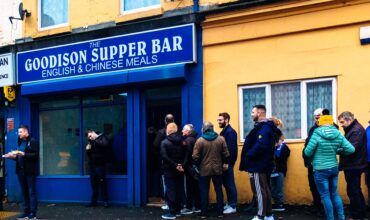Customer lifetime value is a key metric for business improvement, achieved through carrying out rewards programs for businesses worldwide.
As advertising prices escalate, your customer acquisition costs will eventually outweigh your revenue. All this happens due to one key reason – you are not succeeding in encouraging your users to return.
However, loyalty automation programs are known to help digital businesses achieve a number of different goals – from acquiring a solid customer base to boosting customer lifetime value and retaining clientele.
So, if your current goal is to encourage customers to spend more and buy more often, read on as we share the importance of both rewards programs for businesses, lifetime value, and the way you can master it all. As well as the loyalty programs for small businesses that can maximize your every customer’s lifetime value.
What is Customer Lifetime Value?
A customer’s lifetime value, or LTV, is the average amount of money customers will spend with your brand, and over time.
Simply, the longer a customer purchases from you, the higher their LTV will be. Naturally, your most valuable customers are the ones who make frequent, high-value purchases.
Understanding lifetime value means considering the future potential of each customer beyond the first sale, as well as your brand’s.
How Do You Calculate Lifetime Value?
The basic LTV calculation for a SaaS business looks like this:
Lifetime value = avg. customer lifetime x avg. monthly spend x %gross margin
In layman terms, let’s say that you sell marketing automation software that costs $100/month. The average customer keeps their subscription active for 24 months, and your gross margin is 60% in each monthly revenue.
So, lifetime value = 24 * 100 * .60 = $1,440
For a more complete calculation, you may choose to subtract customer acquisition costs, but we’ll keep it simple for now.
Why is Lifetime Value Important?
Lifetime value matters helps you understand the expected revenue generated from a single customer. Plus, lifetime value indicates just how profitable your customer acquisition is. It is a significant factor in determining whether or not you can be profitable after taking your sales and marketing expenses into account.
To illustrate how lifetime value is different from overall revenue, let’s imagine you run an e-commerce store that sells shirts:
- The average loyal customer buys an average of 2 shirts every year for 3 years (i.e. 6 shirts over their lifetime).
- Your gross margin on each shirt is $30.
The lifetime value of this customer is therefore: 2 * 3 * 30 = $180.
We can easily see the importance of an increased lifetime value in comparing whether these 6 shirts had been sold to 6 individual customers (who each left after one sale) instead of just one customer (who continued to purchase).
By focusing on increasing the lifetime value of your customers, you can ensure that you earn a profit, despite spending money to acquire them.
The bottom line here is that customer acquisition is expensive.
A profitable business model is possible only when a customer’s lifetime value is greater than the money spent to acquire them (i.e. customer acquisition costs).
Now that you know why increasing lifetime value is important, let’s work on improving it.
How Do You Increase Customer LTV?
The way to increase customer lifetime value is inherently simple. Give customers a reason to spend more, otherwise known as rewards programs for businesses.
Customer loyalty programs for small businesses and lifetime value go hand in hand.
For any business, in fact, your most valuable, loyal customers are the ones spending the most money, and over the longest time span.
By implementing incentive-based rewards programs for businesses and loyalty features, you provide customers with a reason to keep spending money with your brand instead of a competitor. When users know they can earn rewards, special offers, or opportunities they can’t get elsewhere, they will be more inclined to choose your brand – time and time again.
Why Use Rewards Programs for Businesses?
Firstly, both loyalty features and loyalty programs for small businesses encourage customers to come back to a brand and make repeat purchases – hence an increase in your revenue.
Retaining current customers by using earning system or digital coupon creator will cost you less than acquiring new ones.
In addition, by rewarding repeat customers with special offers, small business owners can motivate them to be brand ambassadors, willing to spread the word about your business to their peers across different networks.
Secondly, strong rewards programs for businesses can be an effective way for small businesses to show their personal side and remain competitive in a market dominated by moguls.
For example, many customers may not really love a big brand’s coffee but do love the fact they can earn reward points through their purchases, thus saving money in the long run.
In such a fashion, it would be simple and cost-effective for a small coffee shop with quality coffee to do the same.
Whether a small, mom-and-pop shop or a large chain, customers want to feel special and unlike any other customer. Therefore, loyalty or rewards programs for businesses are an easy tool in appealing to customers to stick with your business through rewarding them for their repeat purchases.
Most importantly, loyalty programs help businesses grow.
Rewards Programs for Businesses: Customer Lifetime Value Matters
VIP Programs & Frequent Shopper Rewards
A VIP program is one of the most effective systems for maximizing customer lifetime value.
It incentivizes repeat purchases by letting customers gain access to exclusive perks with every purchase or usage goal they meet.
VIP reward tiers are particularly motivating as they assign an elevated social status to users who meet each goal. This is something that, based on psychology, customers will be driven to maintain, especially when at risk of being taken away.
Even if they don’t reach the highest tier, the challenge to attain it will increase their usage and spending. In fact, 57% of consumers are more inclined to participate in rewards programs for businesses, if they offer a VIP status and exclusive rewards.
Establishing different milestones for each tier means that you can manipulate customer behaviour to your advantage. For example, you can specify whether a customer reaches the next tier when they refer to a given number of friends, make a specific number of purchases that month, or spend a certain amount on designated items.
Flash Sales & Special Event Incentives
Flash sales are another great way to encourage repeat purchases, this time by creating a sense of urgency and exclusivity.
By combining limited time with high value, flash sales can generate a 35% lift in transaction rates.
For example, offer a $10 credit to anyone who makes a minimum purchase of $50 or more within the next 48 hours, or offer a 20% price reduction to those who upgrade to a premium monthly membership by next week.
Not only do these sales provide immediate revenue, but research indicates that satisfied flash sale customers return to spend another 385% of the first purchase.
Segment your customers and promote time-sensitive rewards programs for business as an ‘appreciation’ gift, or target customers who haven’t bought in a while to get them looking at your offerings again, exposing them to your non-sale products and services.
Customer Referral Programs
Unlike rewards programs for businesses, referral programs may not be the most obvious program choice if your goal is to increase customer lifetime value, but they have indirect benefits nonetheless. These programs are known as a great way to acquire new customers by leveraging the advocacy of your current users.
Referrals have the potential to bring in some of your best customers, as referred customers spend 13.2% more and have 16% higher lifetime values than non-referred customers.
Think about who your most loyal customers are right now.
These customers spend the most on your brand because they understand its value, which means they likely have other friends who share the same interests and will have a similar lifetime value as the referring customer.
Referral programs can take many shapes and forms, the most common being a customer referral program or a customer loyalty card system where your existing users send a referral code to their friends and family.
For example, offer a $5 store credit to the referring user and their friend once the friend makes their first purchase.
Once again, offering rewards specific to your brand will encourage both parties to return for yet another purchase.
GlueLoyalty: The Finest Rewards Programs for You
If considering the implementation of a quality loyalty program that attracts customers and boosts your revenue and rewards accordingly – GlueLoyalty is happy to serve you.
Our customized loyalty programs allow business owners of all sizes to develop a suitable rewards program fit for their business needs and requirements. With this loyalty program, Glue ensures you an automated management process, a specifically targeted audience, and a well-developed rewards system based on points, promotional offers or discounts.
When in doubt, go Glue!



